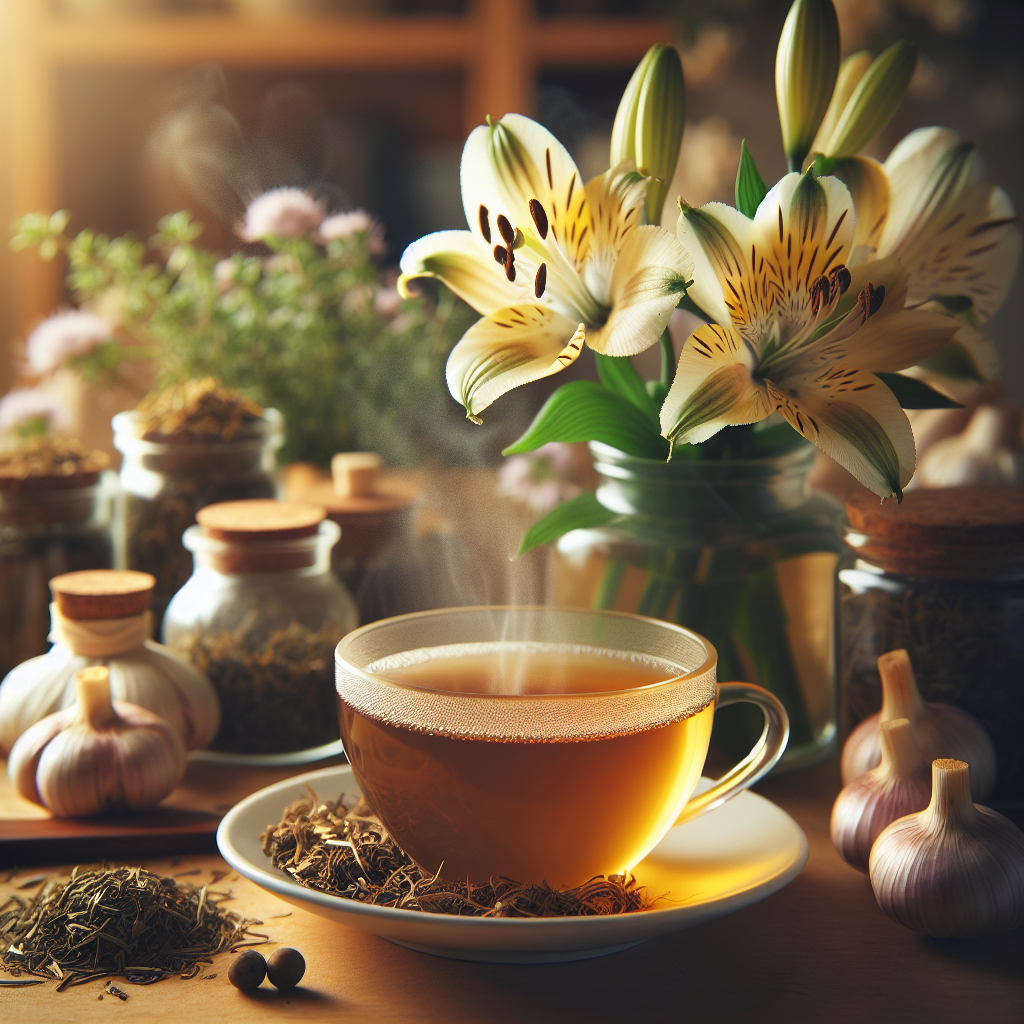Chinese Herbs for Autumn: Nourish the Lungs, Moisten Dryness, and Strengthen Qi
Posted by Sarah Johnson, M.S. in Holistic Healing on Oct 21st 2025
Chinese Herbs for Autumn: Nourish the Lungs, Moisten Dryness, and Strengthen Qi
Autumn in Traditional Chinese Medicine (TCM) is the season of the Metal element, which governs the Lungs and Large Intestine. As the air becomes dry and cool, the Lungs — described as delicate and moisture-loving — require extra nourishment. The best Chinese herbs and foods for autumn help moisten dryness, support Lung Qi, and protect the body’s immune defense (Wei Qi).
1. Understanding Autumn and the Metal Element
In TCM, autumn symbolizes contraction, reflection, and refinement. Nature draws inward — leaves fall, air dries, and temperatures drop.
The Metal element corresponds to clarity, structure, and letting go. Within the body, it governs:
-
Lungs (Fei): Control breath, disperse and descend Qi, regulate moisture.
-
Large Intestine (Da Chang): Governs elimination and emotional release.
When these organs are balanced, we experience easy breathing, clear skin, and emotional lightness. When imbalanced — dryness, grief, or stagnation appear.
Key insight: Just as nature sheds what’s old, autumn invites us to release what no longer serves — physically and emotionally.
 2. Why Autumn Dryness Affects the Lungs
2. Why Autumn Dryness Affects the Lungs
The Lungs are the “tender organ” in TCM — they dislike dryness and cold.
Dry air depletes Lung Yin, reducing the thin protective moisture that coats your respiratory tract, skin, and mucous membranes.
Signs of autumn dryness:
-
Dry cough or tickling throat
-
Rough voice or dry nasal passages
-
Itchy, flaky skin
-
Fatigue or shallow breathing
-
Sadness, grief, or emotional heaviness
If unaddressed, prolonged dryness can weaken Wei Qi (defensive energy) and make the body more vulnerable to seasonal changes.
3. Top Chinese Herbs to Support the Lungs in Autumn
These herbs are traditionally used to moisten dryness, strengthen Lung Qi, and balance Yin.
| Herb | Chinese Name | Key Actions | Ideal Use |
|---|---|---|---|
| Bai He (Lily Bulb) | 百合 | Moistens Lungs, soothes dryness cough, nourishes Yin | Dry throat, mild cough, irritability |
| Mai Dong (Ophiopogon Root) | 麦冬 | Nourishes Yin of Lungs & Stomach, clears heat, generates fluids | Chronic dryness, Yin deficiency |
| Huang Qi (Astragalus Root) | 黄芪 | Strengthens Lung Qi, supports immune Wei Qi | Prevention & seasonal resilience |
| Sha Shen (Adenophora / Glehnia Root) | 沙参 | Moistens Lungs, clears heat, generates fluids | Dry cough, sore throat |
| Sang Ye (Mulberry Leaf) | 桑叶 | Clears Lung heat, moistens dryness, soothes wind | Autumn tickle cough, early colds |
| Bai He Gu Jin Wan | — | Classic formula for Lung Yin deficiency | Persistent dry cough, Yin depletion |
| Sang Ju Yin | — | Gentle early-season wind-heat formula | Mild cough, scratchy throat |
Explore these herbs at 1st Chinese Herbs.
4. Foods That Moisten and Nourish Yin
Autumn’s diet should balance warm nourishment and gentle moisture.
-
Moistening fruits: Pears, apples, persimmons, and loquats.
-
Yin foods: White fungus, tofu, almonds, sesame seeds, lotus root.
-
Soups & broths: Pear + white fungus soup, daikon & radish soup.
-
Warming spices (small amounts): Ginger, cinnamon, nutmeg — support circulation without drying Yin.
-
Avoid: Overly spicy, fried, or raw foods that strip moisture.
TCM tip: Steam or stew instead of frying. Moisture from cooking complements Lung Yin.
5. Lifestyle Practices for Lung Balance
| Practice | Purpose | How It Helps |
|---|---|---|
| Breathing exercises | Strengthens Lung Qi | Slow, mindful exhale cultivates calm and elasticity of breath |
| Qigong or gentle yoga | Moves stagnation | Opens chest, clears grief, improves circulation |
| Protect your neck (wind gate) | Prevents invasion of wind-cold | Wear a scarf in cool breezes |
| Humidify your environment | Restores moisture | Protects respiratory tract and skin |
| Letting go ritual | Balances emotions | Journaling or meditation helps release grief and clutter |
Emotional connection: The Lungs process grief. Allowing tears, reflection, and acceptance nourishes both the Metal element and mental clarity.
 6. Herbal Tea for Autumn Lungs
6. Herbal Tea for Autumn Lungs
Moistening Pear & Lily Bulb Tea
Ingredients:
-
1 dried pear slice
-
5 g Bai He (Lily Bulb)
-
3 g Mai Dong (Ophiopogon)
-
2 g Licorice (Gan Cao)
Directions:
-
Simmer herbs in 2 cups of water for 20 minutes.
-
Strain and drink warm.
-
Enjoy daily during dry months for gentle Yin nourishment.
7. Common Questions About Autumn Lung Health (FAQ)
What causes lung dryness in autumn?
The fall climate’s dryness reduces internal fluids, especially in the lungs, leading to irritation and thirst.
Which Chinese herbs moisten the lungs?
Lily Bulb (Bai He), Ophiopogon Root (Mai Dong), and Sha Shen are well-known Yin-nourishing herbs that restore moisture.
What foods help with dryness and cough?
Pears, loquats, almonds, and soups made with white fungus and lotus root moisten Lung Yin naturally.
How does TCM view grief and the lungs?
Unreleased grief constrains Lung Qi. Reflection, journaling, or breathwork helps transform emotional stagnation into acceptance.
When should I start Lung support in autumn?
Begin as early as late August through November to strengthen defensive energy before winter’s cold sets in.
8. Related Herbs & Formulas
-
Astragalus (Huang Qi) – Builds Wei Qi
-
Bai He Gu Jin Wan Teapills – Nourishes Lung Yin
-
Mai Dong (Ophiopogon Root) – Moistens dryness
-
Sang Ju Yin Teapills – Early autumn formula
Autumn is the season of refinement and release — a time to breathe deeply, slow down, and nourish the delicate Lungs that carry your vitality through the colder months ahead.
By following TCM wisdom — moistening dryness, balancing Yin, and protecting Lung Qi — you honor both nature’s rhythm and your own inner balance.
Embrace the crisp air, savor warm tea, and let each breath remind you that wellness begins with awareness.
✍️ Authorship & DSHEA Compliance
Written by: Sarah Johnson, M.S. in Holistic Healing
Reviewed by: 1st Chinese Herbs Editorial Team
Published by: 1st Chinese Herbs
Last Updated: October 21 2025
These statements have not been evaluated by the Food and Drug Administration.
This content is for educational purposes only and is not intended to diagnose, treat, cure, or prevent any disease.

